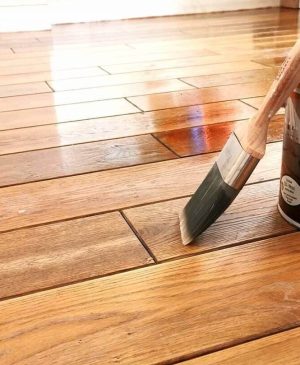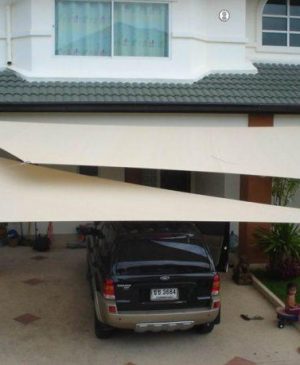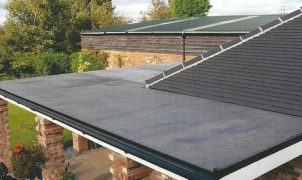As more people become aware of the environmental impact of their daily choices, the demand for sustainable living solutions has increased. Homeownership, in particular, offers a unique opportunity to blend personal comfort with environmental responsibility. Whether you’re building a new home, renovating an existing one, or simply striving to make your current space more sustainable, incorporating eco-friendly practices and regular maintenance can significantly improve your home’s functionality, longevity, and environmental footprint.
Not only will these efforts help reduce your carbon footprint, but they can also save you money in the long run, increase the value of your property, and create a healthier living environment for you and your family. In this article, we’ll explore how integrating eco-friendly solutions and committing to regular maintenance can transform your home into an environmentally conscious and well-maintained haven.
1. Why Eco-Friendly Practices Matter
Eco-friendly practices are designed to minimize harm to the environment, reduce waste, and conserve energy. In the context of homeownership, adopting such practices can help lower your utility bills, improve air quality, and reduce your overall environmental impact. In addition, with growing concerns over climate change and resource depletion, embracing sustainability in your home makes a meaningful contribution to the global movement toward a healthier planet.
From energy-efficient appliances to water conservation techniques, eco-friendly home improvements are often more accessible than one might think. Moreover, sustainable choices often align with better home maintenance, as many eco-friendly materials are more durable and require less upkeep.
2. Eco-Friendly Home Improvement Ideas
a. Opt for Energy-Efficient Appliances
One of the most effective ways to make your home more eco-friendly is by investing in energy-efficient appliances. These appliances use less energy than their traditional counterparts, which can lead to significant savings on your electricity bills. Look for products that have the Energy Star label, which indicates that they meet strict energy efficiency guidelines set by the U.S. Environmental Protection Agency.
For example, refrigerators, washing machines, and dishwashers that are Energy Star-rated use advanced technology to reduce energy consumption. Similarly, LED light bulbs consume far less electricity than incandescent bulbs and last much longer, making them a cost-effective and eco-friendly lighting option.
b. Install Solar Panels
Solar panels are one of the most impactful ways to reduce your home’s reliance on nonrenewable energy sources. By converting sunlight into electricity, solar panels can significantly lower your energy bills and reduce your carbon footprint. While the initial cost of installation can be high, tax incentives and rebates are available in many areas, making this a more affordable option for many homeowners. Over time, solar panels can pay for themselves by generating free energy for your home.
Moreover, advances in solar technology have made it easier than ever to integrate solar panels into a variety of home designs. From roof-mounted panels to innovative solar shingles, you can choose a solution that works with your aesthetic preferences and available space.
c. Use Sustainable Building Materials
When renovating or building a home, consider using sustainable building materials that are both eco-friendly and durable. Bamboo, for instance, is a fast-growing, renewable resource that can be used for flooring, cabinetry, and furniture. Not only is bamboo environmentally friendly, but it’s also highly durable and stylish, adding a modern touch to any room.
Reclaimed wood is another sustainable option that can add character and charm to your home while reducing deforestation. Whether used for flooring, walls, or furniture, reclaimed wood offers a unique, rustic look with a reduced environmental impact.
Other sustainable building materials include recycled steel, low-VOC paints, and insulation made from recycled materials, all of which contribute to a healthier, more eco-friendly home.
d. Water Conservation Systems
Water is a precious resource, and conserving it in your home can have a significant impact on both the environment and your utility bills. Start by installing low-flow fixtures such as showerheads, faucets, and toilets, which reduce water consumption without sacrificing performance.
Additionally, rainwater harvesting systems allow you to collect and store rainwater for use in irrigation, outdoor cleaning, or even flushing toilets. This reduces your reliance on municipal water systems and is an excellent way to make your home more sustainable, especially in areas where water scarcity is a concern.
e. Enhance Insulation and Seal Gaps
A well-insulated home is not only more comfortable but also more energy-efficient. Proper insulation keeps heat in during the winter and out during the summer, reducing the need for heating and air conditioning. As a result, you’ll save on energy bills while reducing your home’s carbon footprint.
Ensure your home is adequately insulated by checking the attic, walls, and basement. Additionally, look for air leaks around windows, doors, and ducts. Sealing these gaps with weatherstripping or caulk can prevent heat loss, keeping your home more energy-efficient year-round.
3. Regular Maintenance to Preserve Eco-Friendly Investments
While eco-friendly home improvements can significantly enhance your living space, regular maintenance is essential to ensure these upgrades continue to perform optimally. Proper upkeep not only helps preserve the value of your investments but also maximizes their efficiency and longevity.
a. Routine HVAC Maintenance
Your HVAC system plays a major role in your home’s energy efficiency. To keep it running efficiently, schedule regular maintenance, including cleaning or replacing filters, checking refrigerant levels, and inspecting the ductwork for leaks. A well-maintained HVAC system will use less energy to heat and cool your home, reducing both your carbon footprint and utility bills.
b. Clean Solar Panels
If you’ve invested in solar panels, it’s crucial to keep them clean and free from debris to ensure they operate at maximum efficiency. Solar panels are generally low-maintenance, but regular cleaning—especially in areas with frequent dust or bird droppings—will help maintain their energy-producing capacity.
c. Roof and Gutter Cleaning
Keeping your roof in good condition is essential for both environmental and financial reasons. Regularly inspect your roof for damage or wear and tear, as this can affect your home’s energy efficiency. Additionally, ensure your gutters are free from leaves and debris, as clogged gutters can cause water damage and lead to increased energy costs if moisture seeps into your walls and insulation.
d. Check Insulation and Sealant
Even with eco-friendly insulation in place, it’s important to check its condition regularly. Over time, insulation can degrade or settle, reducing its effectiveness. Ensure that your attic, walls, and basement are still properly insulated and that any air leaks are sealed. This routine check-up will help maintain a consistent indoor temperature, reducing your reliance on heating and cooling systems.
e. Regularly Service Appliances
If you’ve installed energy-efficient appliances, make sure to service them regularly to keep them in good working order. Simple tasks, such as cleaning dryer vents, defrosting freezers, and checking refrigerator seals, can prevent energy waste and ensure your appliances continue to perform at their best. Regular servicing also helps extend the lifespan of your appliances, reducing the need for early replacements.
4. The Financial and Environmental Benefits
Adopting eco-friendly practices and maintaining your home properly not only benefits the environment but also offers substantial financial advantages. For example, energy-efficient upgrades, such as insulation improvements, solar panels, and energy-efficient appliances, lower your monthly utility bills. Over time, these savings can offset the initial investment, making your home more cost-effective in the long run.
Additionally, eco-friendly homes tend to have higher resale values. As more homebuyers prioritize sustainability, homes with energy-efficient features and environmentally conscious materials are in high demand. Proper maintenance also helps preserve the value of your property, ensuring that it remains in top condition for years to come.
Conclusion
Incorporating eco-friendly practices into your home design and maintenance routine is not only a wise environmental choice but also a smart financial investment. From energy-efficient appliances and sustainable building materials to regular maintenance practices, these strategies will help you reduce your home’s carbon footprint while enhancing its longevity, comfort, and value. By making your home more eco-friendly and well-maintained, you’re not only improving your living environment but also contributing to a more sustainable future for generations to come. So, take the steps today to create a home that’s both beautiful and environmentally responsible, ensuring it remains a place of comfort, health, and peace for years to come.


















